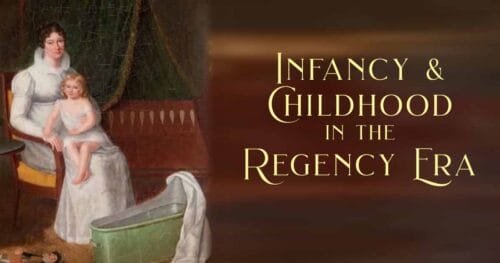When Boys Wore Dresses

Today we take it for granted that childhood is a unique and special period of life during which the child should play and be educated in the ways of their culture, free from the responsibilities of an adult. Most Western societies mark childhood beginning at birth and extending into adolescence, with full adult responsibilities not required until close to an individual’s second decade.
The idea of a lengthy, and in many ways leisurely, childhood was proposed in John Locke’s 1673 treatise, Some Thought Concerning Education. However, it was not until the mid-eighteenth century that his recommendations about education and dress of the sons of the aristocracy were paid heed. Rousseau’s 1762 work, Emile: or On Education helped transform the fad for Locke’s ideas into lasting social change.
Rousseau believed that young men’s innate goodness could be preserved by raising them in a more natural environment which included plain, comfortable clothes which allowed freedom of movement. Such clothing included dresses for little boys and skeleton suits for slightly older boys. (Yes, I know, we’re ignoring little girls again, but I promise, we’ll have a look at them, even if the philosophers didn’t. But that’s another article.)
Infant Clothes

During the Regency, the majority of garments for infants and babies, whether swaddling bands for the first few months of life or simple gowns worn thereafter, were typically linen or cotton, either white or unbleached natural color cloth, possibly trimmed with colored ribbons. These ribbons would be chosen to the mother’s tastes, not restricted to blue for boys and pink for girls. In wealthier families, babies had some “good” clothes to wear while being shown off to visiting family and friends. Typically these garments would be colored or trimmed in ways that would not stand up as well to the harsh laundry techniques of the day, so they would be worn sparingly.
During this era, parents felt little need to identify a small child’s gender by their clothing. Those who knew the family personally would already know the child’s gender, and for those who did not know the family that well, it was none of their business. Moreover, very young children rarely appeared in public. The age at which children began to be seen outside the house coincided with the age at which they would begin to wear gender differentiated clothing.
Boys in Dresses

Before learning to walk, babies wore long gowns that extended beyond their feet. Once out of infancy (walking age between 1 and 2 years old), both boys and girls were ‘shortcoated’, dressed in ankle length dresses. The early 19th century saw almost no difference between dresses for little boys and little girls. Little boys might wear their sisters’ hand-me-downs and vice-versa. Dresses might be made of chintz or printed cottons. They were worn with small white caps, sashes and petticoats or long ruffled pantaloons.
Though it is difficult for the modern observer to wrap their minds around dressing little boys like little girls, the fact was that dresses were considered children’s wear, not little girls’ clothes. Children’s dresses were very distinct from women’s garments, so to the eye of the person in context, it was not a matter of boys in women’s garments. On a more practical note, in the days before disposable diapers and washing machines, dresses were much more practical garments for children who were not toilet trained.
The transition of little boys from wearing dresses to masculine pants was called breeching and marked a major transition in a child’s life. Watch this space for more details on that!
Read more about Regency Era childhood HERE
References
A Lady of Distinction – Regency Etiquette, the Mirror of Graces (1811) R.L. Shep Publications (1997)
Barreto, Cristina and Lancaster, Martin – Napoleon and the Empire of Fashion Skira (2010)
Brooke, Iris – English Children’s Costume 1775-1920 Dover Publications Inc (2003)
Davidoff, Leonore & Hall, Catherine – Family Fortunes: Men and Women of the English Middle Class 1780-1850. Routledge (2002)
Historic Boy’s Clothing http://histclo.com/chron/c1800.html
Kane, Kathryn. Of Hanging Sleeves and Leading Strings. Regency Redingote. 20 January 2012 http://regencyredingote.wordpress.com/2012/01/20/of-hanging-sleeves-and-leading-strings/>
Kane, Kathryn . Regency Baby Clothes: Blue for Boys, ??? for Girls. Regency Redingote. 8 June 2012 http://regencyredingote.wordpress.com/2012/06/08/regency-baby-clothes-blue-for-boys-for-girls/
Kelly, Ian – Beau Brummell, The Ultimate Man of Style Free Press (2006)
Sanborn, Vic The well-dressed Regency boy wore a skeleton suit. Jane Austen’s World. August 17, 2009 http://janeaustensworld.wordpress.com/2009/08/17/the-well-dressed-regency-boy-wore-a-skeleton-suit/
Selbie, Robert – The Anatomy of Costume Crescent Books (1977)
Selwyn, David – Jane Austen and Children Continuum Books (2010)
Shoemaker, Robert B. – Gender in English Society 1650-1850 Pearson Education Limited (1998)

I had a dress with leading strings on it worn by a boy in the twentieth century. Gowns were much more practical for toddlers until they were toilet trained.
I definitely agree!